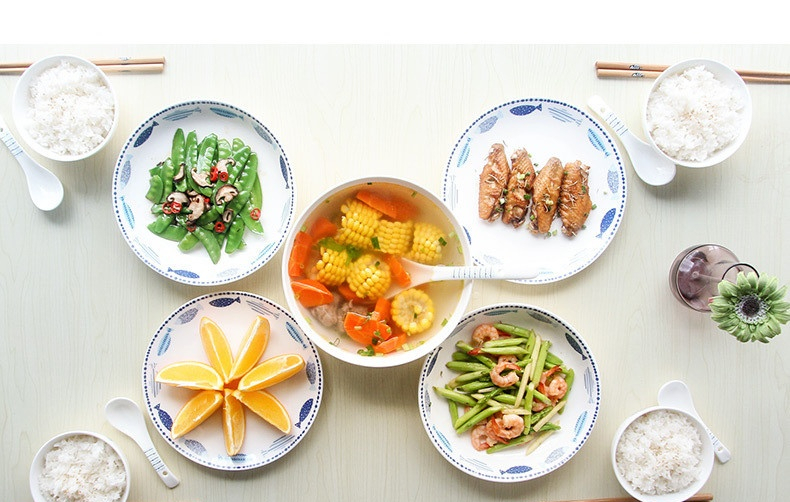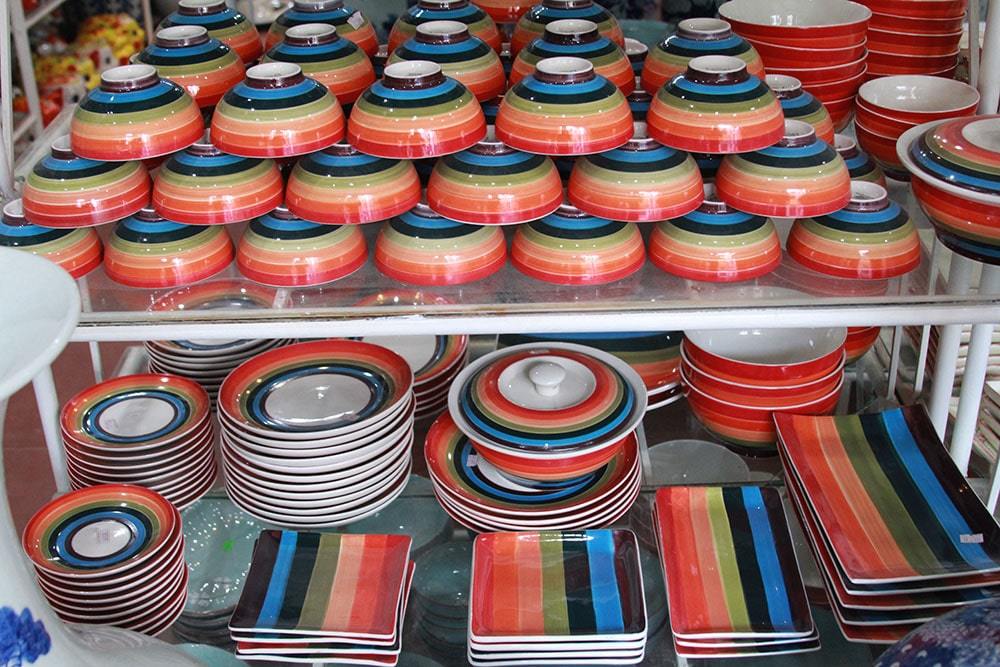Family meals provide a comforting and welcoming environment for family members to connect and unwind after a long and demanding day. These meals consist of nourishing dinners with delectable dishes that cater to each family member’s preferences, all prepared with dedication by mothers and wives.
For homemakers, ensuring their loved ones have access to delicious, nutritious, and safe meals is always a top priority.
However, taking care of the household goes beyond just the food and cooking methods. Homemakers should also prioritize the quality of plates, bowls, and utensils used for dining.

Dishes play a fundamental role in every household as they are essential items that are highly familiar to everyone.
When it comes to selecting ceramic dishes, finding safe and high-quality options at reasonable prices can be a challenge for many individuals. Ceramics are the most commonly used material for plates, dishes, and bowls in today’s market.
Choose Safe Dishes Based on Brand and Origin
When selecting safe dishes, it is essential to adhere to a few key guidelines. First and foremost, prioritize products from reputable brands and origins. This is crucial as it indicates the product’s registration and quality testing.
Currently, a significant portion of ceramic dishes available in the market, particularly those from unclear origins, are manufactured in China. It is worth noting that these dishware often exceeds regulatory lead levels, making them unsafe for consumption and detrimental to health.
To ensure consumer convenience in identifying products that comply with quality standards, our company has implemented a labeling system. Products that meet regulatory requirements are identified with a Compliant Label (CR Label).
Ceramic dishes must meet standards for lead and cadmium content, while plastic dishes must meet standards for phenol, formaldehyde, and dry matter to ensure regulatory compliance. Organizations and individuals involved in the import, production, and trade of packaging and utensils must comply with these regulations. A Certificate of Compliance Announcement from the Food Safety Department and fulfillment of other legal prerequisites are necessary before engaging in these activities.
Quality-Assured Plates and Dishes are products that have undergone thorough compliance testing before being released to the market.
Select Dishes Based on Our Expertise
When purchasing ceramic dishes, it is recommended to gently tap the items with your fingers. A clear and metallic sound indicates good quality, while a dull and heavy sound suggests poor quality.
For ceramic rice bowls, plates, or trays, there are three effective methods for selection: visual inspection, tapping, and flipping. Pay attention to the outer surface appearance, including brightness, glaze fading, overall freshness, design intensity, and the presence of any imperfections such as black spots or cracks. To further assess quality, gently tap the side or edge of the item with a small stick. A crisp and clear sound indicates high quality, while a dull or mixed sound suggests unnoticed cracks.
To verify the roundness and balance of a bowl or plate, place it upside down on a flat surface or stack it with other items. The item should remain perfectly round and undistorted without any visible deviations. Additionally, selecting bowls with tall feet is recommended for added safety as they help prevent burns and facilitate holding.
Choose Dishes Based on Color
When purchasing household items like dishes, it is advisable to choose items with minimal patterns. Ideally, select dishes in white or pure colors, similar to glass. Dishes with vibrant colors or intricate patterns often contain higher levels of lead, which can pose potential health risks.

It is recommended to select dishes with minimal patterns, preferably in white color.
According to experts from the Institute of Biotechnology – Technology, ceramics fired at temperatures exceeding 1,000°C typically do not possess any color. Manufacturers add lead to create vibrant colors in glass and lower the firing temperature, thus conserving energy.
To enhance the aesthetic appeal of ceramic items, a layer of lead is carefully applied to the exterior, which also allows enhanced light transmission. However, it is important to note that consuming products with patterns near the cup’s rim can pose significant health risks, especially for young children, as lead can seep into the body through food and drink. Therefore, it is advisable to refrain from purchasing brightly colored ceramics and glass plates and dishes to ensure safety.
Based on research conducted by experts in the field, certain observations and conclusions can be made from the perspective of families and society as a whole. These findings provide important insights into the dynamics and factors that shape familial and societal relationships.

































